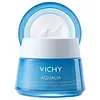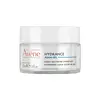What's inside
What's inside
 Key Ingredients
Key Ingredients

 Benefits
Benefits

 Concerns
Concerns

 Ingredients Side-by-side
Ingredients Side-by-side

Water
Skin ConditioningGlycerin
HumectantCaprylic/Capric Triglyceride
MaskingAlcohol Denat.
AntimicrobialPropanediol
SolventIsopropyl Palmitate
EmollientButyrospermum Parkii Butter
Skin ConditioningAmmonium Polyacryloyldimethyl Taurate
Emulsion StabilisingZea Mays Starch
AbsorbentMannose
HumectantP-Anisic Acid
MaskingSodium Hyaluronate
HumectantSodium Hydroxide
BufferingSodium PCA
HumectantAcrylates/C10-30 Alkyl Acrylate Crosspolymer
Emulsion StabilisingCaprylyl Glycol
EmollientCetearyl Alcohol
EmollientCetearyl Glucoside
EmulsifyingCitric Acid
BufferingGlyceryl Isostearate
EmollientWater, Glycerin, Caprylic/Capric Triglyceride, Alcohol Denat., Propanediol, Isopropyl Palmitate, Butyrospermum Parkii Butter, Ammonium Polyacryloyldimethyl Taurate, Zea Mays Starch, Mannose, P-Anisic Acid, Sodium Hyaluronate, Sodium Hydroxide, Sodium PCA, Acrylates/C10-30 Alkyl Acrylate Crosspolymer, Caprylyl Glycol, Cetearyl Alcohol, Cetearyl Glucoside, Citric Acid, Glyceryl Isostearate
Water
Skin ConditioningGlycerin
HumectantCaprylic/Capric Triglyceride
MaskingHydroxyethyl Acrylate/Sodium Acryloyldimethyl Taurate Copolymer
Emulsion StabilisingIsocetyl Stearoyl Stearate
EmollientTriethylhexanoin
MaskingBetaine
HumectantPolyglyceryl-10 Myristate
Skin Conditioning1,2-Hexanediol
Skin ConditioningAloe Barbadensis Leaf Juice Powder
Skin ConditioningBehenyl Alcohol
EmollientCaprylyl Glycol
EmollientCitric Acid
BufferingEthylhexylglycerin
Skin ConditioningParfum
MaskingHelianthus Annuus Seed Oil
EmollientLecithin
EmollientPolysorbate 60
EmulsifyingPropanediol
SolventSodium Hyaluronate
HumectantSodium Phytate
Sorbitan Isostearate
EmulsifyingSqualane
EmollientTocopherol
AntioxidantTocopheryl Glucoside
EmollientXanthan Gum
EmulsifyingWater, Glycerin, Caprylic/Capric Triglyceride, Hydroxyethyl Acrylate/Sodium Acryloyldimethyl Taurate Copolymer, Isocetyl Stearoyl Stearate, Triethylhexanoin, Betaine, Polyglyceryl-10 Myristate, 1,2-Hexanediol, Aloe Barbadensis Leaf Juice Powder, Behenyl Alcohol, Caprylyl Glycol, Citric Acid, Ethylhexylglycerin, Parfum, Helianthus Annuus Seed Oil, Lecithin, Polysorbate 60, Propanediol, Sodium Hyaluronate, Sodium Phytate, Sorbitan Isostearate, Squalane, Tocopherol, Tocopheryl Glucoside, Xanthan Gum
 Reviews
Reviews

Ingredients Explained
These ingredients are found in both products.
Ingredients higher up in an ingredient list are typically present in a larger amount.
This ingredient is an emollient, solvent, and texture enhancer. It is considered a skin-softener by helping the skin prevent moisture loss.
It helps thicken a product's formula and makes it easier to spread by dissolving clumping compounds.
Caprylic Triglyceride is made by combining glycerin with coconut oil, forming a clear liquid.
While there is an assumption Caprylic Triglyceride can clog pores due to it being derived from coconut oil, there is no research supporting this.
Learn more about Caprylic/Capric TriglycerideCaprylyl Glycol is a humectant and emollient, meaning it attracts and preserves moisture.
It is a common ingredient in many products, especially those designed to hydrate skin. The primary benefits are retaining moisture, skin softening, and promoting a healthy skin barrier.
Though Caprylyl Glycol is an alcohol derived from fatty acids, it is not the kind that can dry out skin.
This ingredient is also used as a preservative to extend the life of products. It has slight antimicrobial properties.
Learn more about Caprylyl GlycolCitric Acid is an alpha hydroxy acid (AHA) naturally found in citrus fruits like oranges, lemons, and limes.
Like other AHAs, citric acid can exfoliate skin by breaking down the bonds that hold dead skin cells together. This helps reveal smoother and brighter skin underneath.
However, this exfoliating effect only happens at high concentrations (20%) which can be hard to find in cosmetic products.
Due to this, citric acid is usually included in small amounts as a pH adjuster. This helps keep products slightly more acidic and compatible with skin's natural pH.
In skincare formulas, citric acid can:
While it can provide some skin benefits, research shows lactic acid and glycolic acid are generally more effective and less irritating exfoliants.
Most citric acid used in skincare today is made by fermenting sugars (usually from molasses). This synthetic version is identical to the natural citrus form but easier to stabilize and use in formulations.
Read more about some other popular AHA's here:
Learn more about Citric AcidGlycerin is already naturally found in your skin. It helps moisturize and protect your skin.
A study from 2016 found glycerin to be more effective as a humectant than AHAs and hyaluronic acid.
As a humectant, it helps the skin stay hydrated by pulling moisture to your skin. The low molecular weight of glycerin allows it to pull moisture into the deeper layers of your skin.
Hydrated skin improves your skin barrier; Your skin barrier helps protect against irritants and bacteria.
Glycerin has also been found to have antimicrobial and antiviral properties. Due to these properties, glycerin is often used in wound and burn treatments.
In cosmetics, glycerin is usually derived from plants such as soybean or palm. However, it can also be sourced from animals, such as tallow or animal fat.
This ingredient is organic, colorless, odorless, and non-toxic.
Glycerin is the name for this ingredient in American English. British English uses Glycerol/Glycerine.
Learn more about GlycerinPropanediol is an all-star ingredient. It softens, hydrates, and smooths the skin.
It’s often used to:
Propanediol is not likely to cause sensitivity and considered safe to use. It is derived from corn or petroleum with a clear color and no scent.
Learn more about PropanediolSodium Hyaluronate is hyaluronic acid's salt form. It is commonly derived from the sodium salt of hyaluronic acid.
Like hyaluronic acid, it is great at holding water and acts as a humectant. This makes it a great skin hydrating ingredient.
Sodium Hyaluronate is naturally occurring in our bodies and is mostly found in eye fluid and joints.
These are some other common types of Hyaluronic Acid:
Learn more about Sodium HyaluronateWater. It's the most common cosmetic ingredient of all. You'll usually see it at the top of ingredient lists, meaning that it makes up the largest part of the product.
So why is it so popular? Water most often acts as a solvent - this means that it helps dissolve other ingredients into the formulation.
You'll also recognize water as that liquid we all need to stay alive. If you see this, drink a glass of water. Stay hydrated!
Learn more about Water